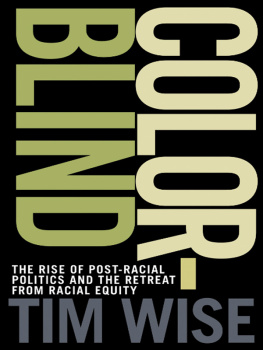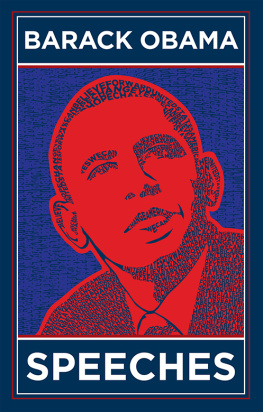Table of Contents
To Austin Koenen:
A man of many talents, including not being afraid to speak his mind
A PARTIAL LIST OF WALL STREET FIRMS AND EXECUTIVES WHO MADE DONATIONS TO POLITICAL CANDIDATES SINCE 2008
Note: The dollar amounts given here do not reflect amounts raised from friends and family, and so understate the true size of the contributions; sums shown are total amounts from January 1, 2007, to June 2010. Note that the limit for personal contributions to a Presidential campaign is $2,400 but by giving to national committees and political action committees (PACs) as well as other organizations, that amount can be vastly exceeded.
INTRODUCTION
Lloyd Blankfein was exhausted. It was May of 2010, and the American public was furious at him for his role in the credit crisis currently plaguing the economy. After taking over Goldman Sachs as its CEO in 2006, Blankfein had transformed one of Americas largest investment banks into a Darwinian trading enterprisegenerating billions of dollars in trading profits with little regard for competitors or even its own clientsand shepherded it through the recession relatively unscathed. Yet despite his and Goldmans success, he had come to be viewed by many as nothing more than a greedy, deceitful, and manipulative traitorout to make a buck no matter the consequences.
To make matters worse, the Securities and Exchange Commission (SEC) was threatening to charge the company with fraud involving its dealings in the lead-up to the financial crisis. Prior to the crisis, Goldman had made a fortune selling products known as synthetic CDOs, one of which was called Abacus. The SEC was alleging that Goldman had misrepresented Abacus to potential purchasers, telling them that ACA Management, an independent bond insurer, had reviewed the mortgages packed within the product, even though Goldman had failed to disclose to ACA (and to investors) that the hedge fund Paulson & Co., led by billionaire investor John Paulson, was trying to bet against (short sell) the product at the same time Goldman was encouraging clients to buy it.
Being hit with even a civil fraud charge (the SEC cant put people in jail) could be a serious blow to any firm, and Blankfein was well aware of the potentially severe consequences he was facing as well. If the charges held up, Goldman would be forced to admit it had committed fraudan act that usually serves as the kiss of death for a bank when important pieces of business are on the line. Not only would future business be lost; according to people close to the firm, Blankfein could be forced to resign.
But despite his trials, Blankfein had taken time out of his grueling schedule to help a firm that wasnt a Goldman client, not even a prospective one. The firm was ShoreBank Corporation, a small community bank located in Chicago that lent money to inner-city businesses and was exploring the possibility of financing nascent and as-yet-unprofitable green businesses through so-called conservation loans and environmental banking, according to the banks Web site. The banks self-described mission was to change the world. And yet despite its seemingly good intentions, the banks urban commercial borrowers were suffering greatly from the lower property values and high unemployment that stemmed from post- financial crisis recession. Without Blankfeins help (and the help of other major Wall Street firms) ShoreBank would follow the fate of dozens of other banks during the great recession and face almost certain collapse and government liquidation.
To be sure, helping out a struggling bank that wasnt even a client was a most un-Goldman-like thing to do. Goldman dealt with only the biggest companies in corporate America or with superwealthy individuals (typically, those with $10 million or more to invest with the firm). More than that, this was a firm that had a reputation for screwing just about any company, clients included, when business was on the line. Goldman, of course, would deny that assertion. Even so, in the normal course of business, a bank like ShoreBank, with its modest funds and do-gooder reputation, wouldnt even appear on Goldmans radar as a potential customer.
Yet for some seemingly inexplicable reason, Lloyd Blankfeinwho had a net worth close to $500 million and until recently had never heard of ShoreBankstarted imploring his friends at other firms, like Morgan Stanley, GE Capital, and others, to help this little bank. Not that Blankfein suggested there was money to be made here. Quite the contrary; it was simply the right thing to do.
To any casual observer, this puzzling scenario raises the question: Why would Blankfein possibly want to save ShoreBank?
First a little background. For Blankfein, it had been a good yearat least on paper. Goldman earned more than $13.4 billion in 2009, and now, nearly midway through 2010, the firm was well on its way to a repeat performance. But with success came a lot of controversy. Goldman, the most profitable firm on Wall Street, and among the most profitable firms in corporate America, had become the poster child for the inequalities of the American economy that followed the financial collapse of 2008.
That collapse was the result of a combination of government policies, reckless risk taking, and sheer greed. The big financial firms, including Goldman, created literally trillions of dollars worth of debt products based on mortgages that were given to people who couldnt afford them, for houses that were way overpriced. When the housing market collapsed, the firms were left with tons of toxic housing debt on their balance sheets. One by one, they started to go under: First, Bear Stearns was rescued by the government, and then Lehman Brothers was allowed to fail. Following Lehman, the other firms (including Goldman), which had been in relatively better shape (but were by no means healthy), were now in the markets crosshairs.
At that point the government, which at the time was being run by Republican president George W. Bush but would shift entirely to the Democrats when Barack Obama was elected president the following year, realized a true collapse of the entire financial system was a distinct possibility and stepped in to bail out the remaining firms.
Like the rest of Wall Street, Goldman had benefited from a bailout, funded entirely by taxpayer dollars, to survive. Yet since then, it had used a number of special privileges created by the Bush administration to help the big banks in the aftermath of the financial crisis to make more money than ever before. The profits of the big banks began rolling in just weeks after the 2008 bailout, yet the government support continued through 2009 and into 2010 as the programs remained firmly in place under the Obama administration. These included, among other perks, guarantees on the firms debt, superlow interest rates set and then left untouched by the Fed, changes in accounting rules that allowed the firms to create profits out of losses, and maybe most of all, the notion that the remaining banks, backed up as they were by the federal government, were too big to fail. In a desperate attempt to save the economy from total collapse, the government did for a handful of banks what the mob does for its highest, most important criminals: It made them, in effect, made men. This policy, known as too big to fail, asserted that some firmsincluding many of those responsible for the credit crisisshould not be allowed to collapse for fear that, if they did, the entire economy would follow.




















